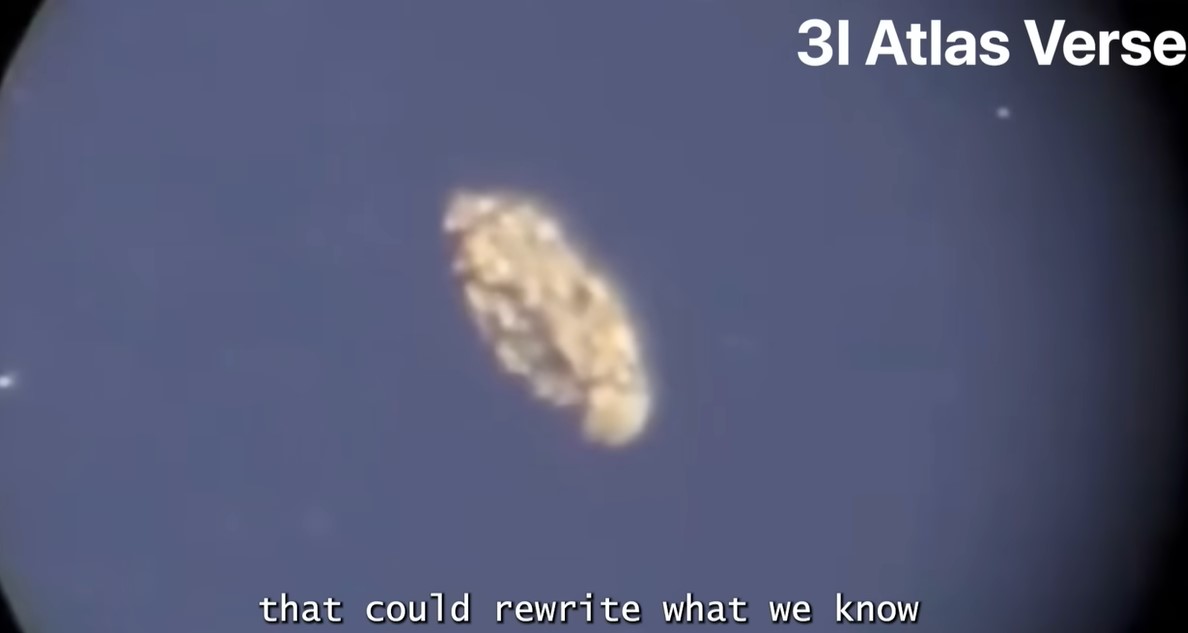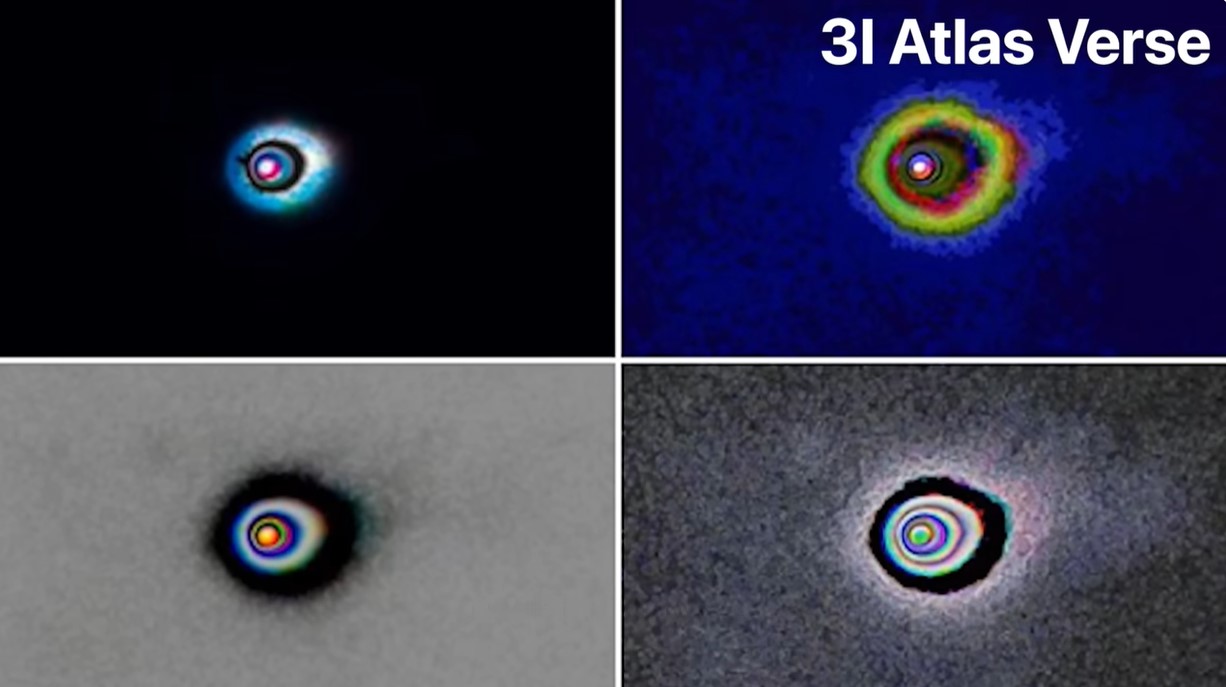Astronomers are in a race against time as groundbreaking observations from the Nordic Optical Telescope in the Canary Islands reveal a stunning cosmic spectacle that could fundamentally alter our understanding of interstellar comets. Captured just three days ago on November 11, 2025, images of comet Three Atlas present an extraordinary expanding ring—a ghostly shell that appears to be forming in real time, defying established norms of cometary behavior and igniting fervent excitement in the astronomical community.

This is not merely a tantalizing glimpse into the realms of deep space; this is a clarion call from the cosmos, as comet Three Atlas showcases bizarre phenomena that challenge everything we thought we knew about such celestial bodies. The ghost shell has emerged around the comet’s coma with a diameter that has ballooned by an astonishing 20% in just four days, reaching 1.4 arc minutes. Scientists are astounded by this rapid expansion, now dubbed the “ghost shell,” which exhibits a perfectly symmetric halo that starkly contrasts with the irregular dust trails typically observed with other comets. The implications of this discovery are monumental, and experts are racing to understand the mechanisms driving such an anomaly.
As of November 14, 2025, the enigmatic anti-tail—a structure that would ordinarily trail away from the sun—is stretching forth like a cosmic finger, elongating by the hour and challenging all norms of orbital mechanics as the dimensions of the antiale have surged well beyond expectations. This unprecedented behavior has called into question the very fundamentals of comet dynamics. Dr. David Jwitt from UCLA, who is at the forefront of analyzing this event, commented in a recent report, “It’s not the asymmetric dust ejection we expect from solar heating. It’s balanced, almost deliberate.” His observations, along with corroborating data from ERA’s European-based telescope, suggest that something strange is afoot in the heart of Three Atlas.

The urgency surrounding this unfolding event cannot be understated. NASA’s Jet Propulsion Laboratory (JPL) is currently scrambling to update their orbital models to account for these unexpected developments. As the anti-tail continues to grow at an unprecedented rate—now extending over 10 arcseconds—astronomers have alerted the public to a rare chance to witness significant cosmic action as it unfolds in real time. Having skimmed just 1.4 AU from the sun on October 30, 2025, Three Atlas was projected to follow a predictable fade into obscurity; instead, it is erupting into a fantastic display of cosmic mechanics that has left scientists both in wonder and perplexity.

Preliminary spectral analyses conducted by the Nordic team indicate alarming levels of CO2 emanating from the comet, hinting at an unusually rich carbon nucleus that may be at play. This isn’t just a comet passing through; it’s a blazing beacon of cosmic mystery capturing the attention of professional astronomers and amateur stargazers alike. The observer from Chile who tweeted, “Seeing Three Atlas’s ring live feels like history in the making,” encapsulates the sentiment of a world enamored with astronomical exploration.

Adding fuel to the fire, the recent joint briefing streamed live from Pasadena has revealed alarming details about the rate of mass loss from the comet’s nucleus, with estimates suggesting an explosive 10% reduction over just the last week. Measurements taken reflect a faint glow of the shell, which appears as a vaporous curtain of gas rather than conventional dust—a critical detail that reframes our approach to studying these interstellar wanderers.
As additional frames are processed and analyzed, the urgency mounts. John Luca Masi, director of the Virtual Telescope Project in Italy, confirmed seeing the dramatic elongation of the anti-tail on November 13, a finding supported by ongoing observations from multiple global sites. His excitement is palpable—with JPL’s latest trajectory reaffirming Three Atlas as a single cohesive body barreling through space at a remarkable velocity of 26 km/s.

Looking ahead, every moment counts as specialists prepare for the comet’s closest approach to Earth on December 19, 2025. This pivotal moment demands precision; Hubble and the James Webb Space Telescope are set to capture high-resolution data beginning November 20, presenting an unprecedented window for analysis. Every new data point presents an opportunity but also adds to the pressure as astronomers aim to decode the mysteries behind the ghost shell and the comet’s curious anti-tail.
The anticipation within the scientific community is palpable—this week’s findings are being described as a turning point in our understanding of interstellar objects. Dr. Avi Lobe from Harvard University, who has been meticulously tracking the comet since its discovery, stressed the necessity of careful analysis moving forward, stating, “This isn’t just a routine flyby. We are witnessing dynamic processes that indicate an exciting phase of activity.”

Meanwhile, the prospect of engaging the public has never been more inviting. Amateur astronomers worldwide book their telescope slots solidly through November 18, eager to share in this extraordinary cosmic event. Students in La Palma are live-streaming Nordic feeds online, rekindling a sense of wonder amidst our modern distractions. With the comet set on a hyperbolic path that will propel it past Jupiter by March 2026, the next crucial days and weeks represent a unique opportunity for human exploration and understanding of the universe.
Framing this phenomenon within a broader context, we recall that Three Atlas burst onto the astronomical scene on July 1, 2025, as part of the Atlas survey in Chile, marking the third confirmed interstellar object alongside Oumuamua in 2017 and Borisov in 2019. Each observation brings with it new insights into the nature of the universe and our place within it. Scientists now grapple with the dichotomy of natural processes against the tantalizing lure of exotic explanations for the comet’s behavior.

The discovery of the ghost shell may herald a new dawn for the study of interstellar objects, challenging long-held beliefs and illuminating paths previously concealed in shadows. The coming weeks will serve as a pivotal period in astronomical research, with mounting anticipation for the potential outpouring of discoveries that lie ahead.
In closing, Tuesday’s revelations mark only the beginning of our deep dive into one of the universe’s most stunning performances. As telescopes whir and data streams pour in, the cosmos continues its enigmatic dance, reminding us once more of the mesmerizing wonders that lie beyond our terrestrial confines. Stay tuned; this is a story that is only just igniting.





